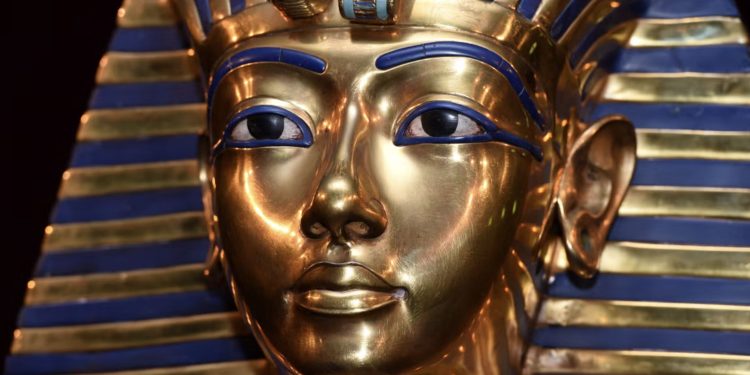A re-examination of Howard Carter’s 1922 discovery has led experts to conclude that the mask, originally thought to immortalize the young pharaoh, was likely crafted for someone else entirely—possibly a high-ranking woman or even a child. Egyptologist Joann Fletcher, speaking in a History Hit documentary, highlighted a critical observation:
“This mask was not made for an adult male pharaoh. When the gold was compared, [they found] the face is made of completely different gold to the rest.”
Moreover, traces of soldering suggest that Tutankhamun’s face was grafted onto a previously used mask. Fletcher speculated that the mask’s original owner could have been Queen Nefertiti, one of ancient Egypt’s most enigmatic figures, or another royal individual.
A Closer Look at the Craftsmanship
Standing 21 inches tall and weighing a staggering 22.5 pounds, the mask features intricate inlays of precious stones and a detachable 5.5-pound golden beard. While the beard might seem like an integral part of the mask, evidence suggests it was added later, perhaps as part of the frantic preparations following Tutankhamun’s sudden death at age 19.
The earring holes further complicate the mystery. In ancient Egypt, such designs were typically reserved for women or children of high status. While Tutankhamun ascended the throne at just nine years old—an age when earrings were common—it’s unlikely he continued to wear them as he matured. This discrepancy raises the question: who was the mask truly intended for?
Theories Point to Nefertiti
The hypothesis linking the mask to Queen Nefertiti gains traction as her burial site remains elusive. Some scholars believe her tomb could still lie hidden within Egypt’s sands. If the mask was originally hers, it underscores the chaotic circumstances surrounding Tutankhamun’s burial.
When the young pharaoh died unexpectedly in 1323 BC, officials may have scrambled to prepare his burial chamber, resorting to repurposing existing royal artifacts. Evidence that the paint inside his tomb was still wet when sealed further supports the theory of a rushed burial.
Tragedy and Turmoil
Tutankhamun’s life was riddled with health challenges, including a cleft palate, curved spine, and clubfoot—ailments likely exacerbated by inbreeding. Scientists speculate he died from malaria or injuries sustained in a chariot accident. These factors, coupled with his unexpected demise, may have left little time for the creation of a personalized burial mask.
Adding to the complexity, his family’s lineage was fraught with political and social upheaval. DNA analysis suggests that Tutankhamun’s father may have married his own sister, an arrangement common among Egyptian royals but one that carried significant genetic risks.
The latest revelations about King Tut’s mask invite us to reconsider long-held assumptions about one of history’s most famous artifacts. Whether the mask originally adorned Queen Nefertiti or another royal figure, its story underscores the richness and complexity of ancient Egyptian culture.
As archaeologists and historians continue to piece together the mysteries of Tutankhamun’s life and death, one thing is clear: the golden mask remains an enduring testament to the artistry and intrigue of the ancient world.











